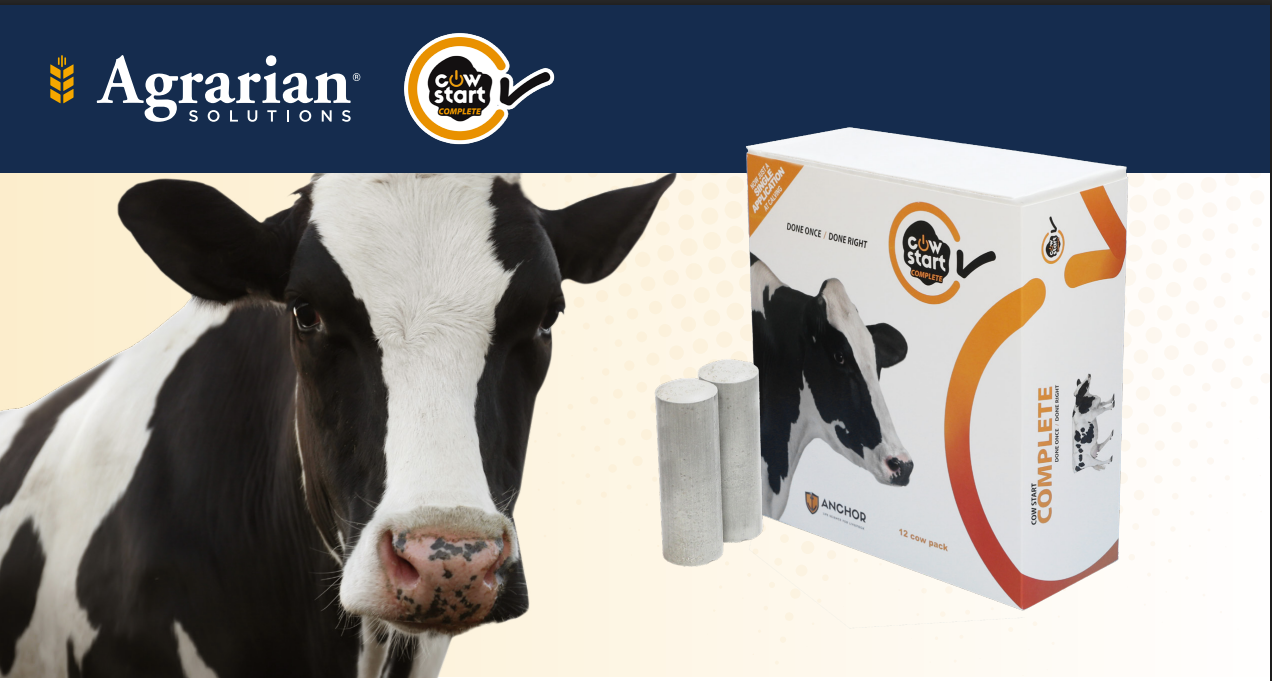Dairy cows experience multiple sources of inflammation during the transition period associated with calving. Recent research suggests that resolving inflammation in transition cows may result in greater milk production and reproductive success than calcium supplementation. A study was conducted from 2024 to 2025 at a large dairy in the United Kingdom to evaluate the ability of Cow Start™ Complete administered at calving to improve milk production and reproductive success.
PROCEDURES
The study was conducted on a well-managed 5,000 cow commercial dairy farm from calving to 200 days in milk. The pre-fresh diet utilized a negative-DCAD strategy. Before calving 140 3rd-lactation and greater Holstein cows were assigned one of two treatments to be given at calving. Groups were balanced for parity and previous lactation milk yield. Treatments were two oral calcium products provided at calving (1 kg Farm-O-San Reviva and one Bovikalc® bolus per cow (OC2)) or two Cow Start Complete boluses at calving (CSC)(Figure 1). Characteristics of the two research groups are listed in Table 1. The OC2 and CSC cows were housed, fed and managed identically from calving through completion of the study.
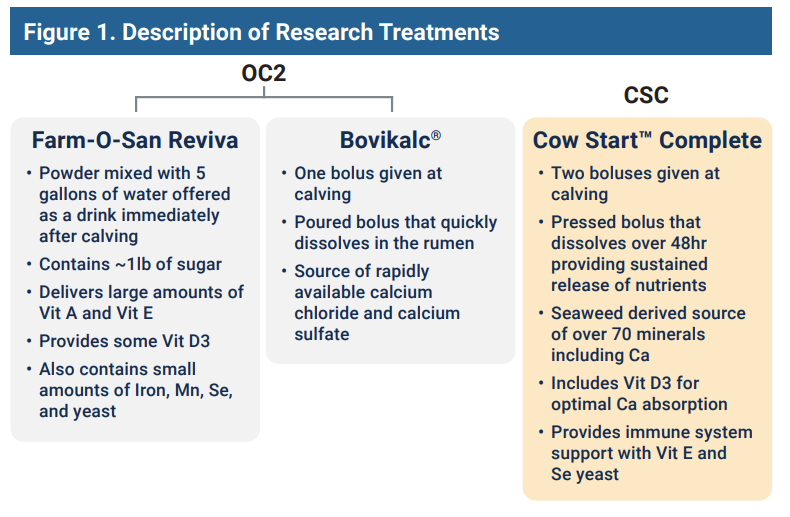

RESULTS AND DISCUSSION
Blood Ca concentrations did not differ between the research groups (Figure 2) after calving and were >2.00 mmol/L or normo-calcemic at 0h, 24h and 48h after calving. Due to similar blood Ca concentrations, all further differences in the trial are due to factors other than Ca.
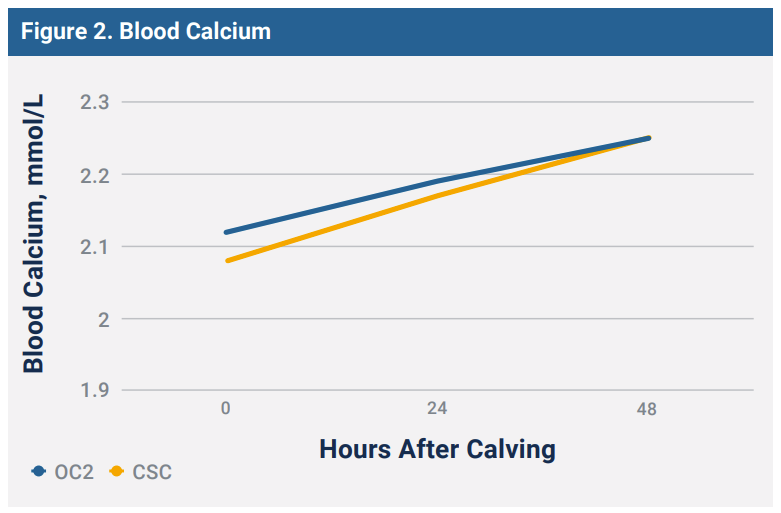
The number of cows per research group precludes statistical differences being detected for health events; however, the CSC cows generally exhibited fewer transition health events (Figure 3).
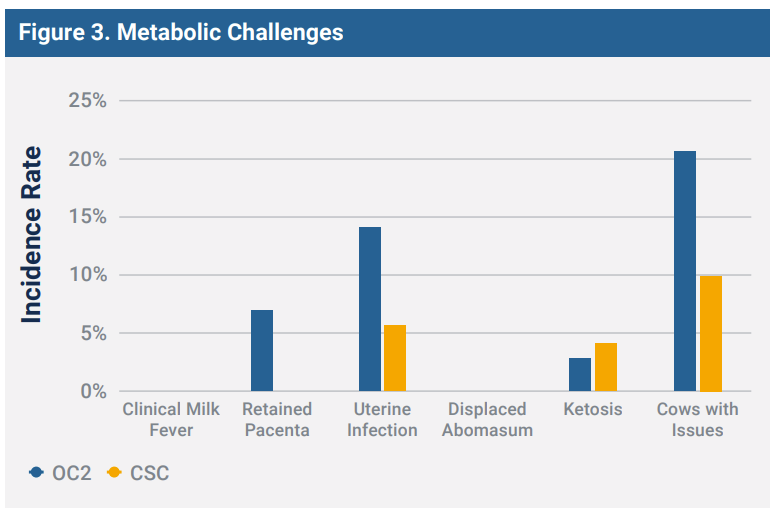
The CSC cows ruminated more (P<0.05) minutes daily than the OC2 cows during the first 14 d post-calving (488 vs 473 min/d) (Figure 4). This may correspond to slightly higher feed intakes in CSC, but individual dry matter intake was not measured in this study due to both research groups being housed together. The OC2 cows lost more (P<0.001) body condition score the first 12 weeks after calving than CSC (-0.13 vs -0.29)(Figure 5). Over the first 100 DIM CSC cows made 5.3 lb more (P<0.001) milk per day (116.5 lb vs 111.2 lb) than the OC2 cows (Figure 6).
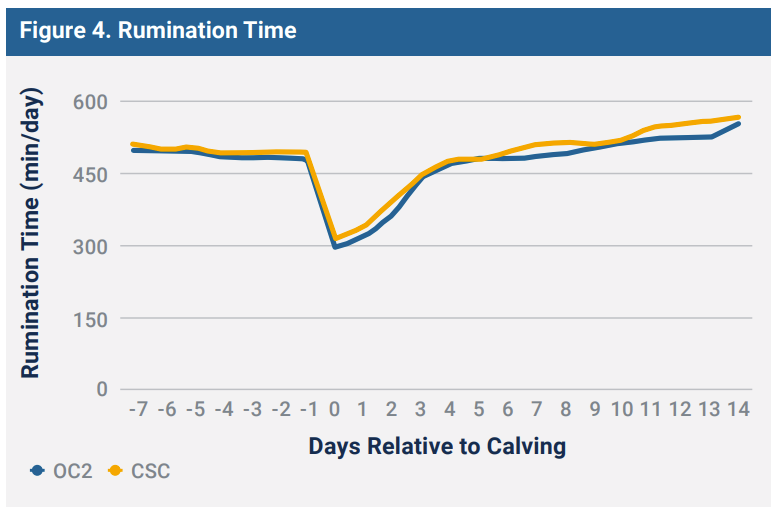
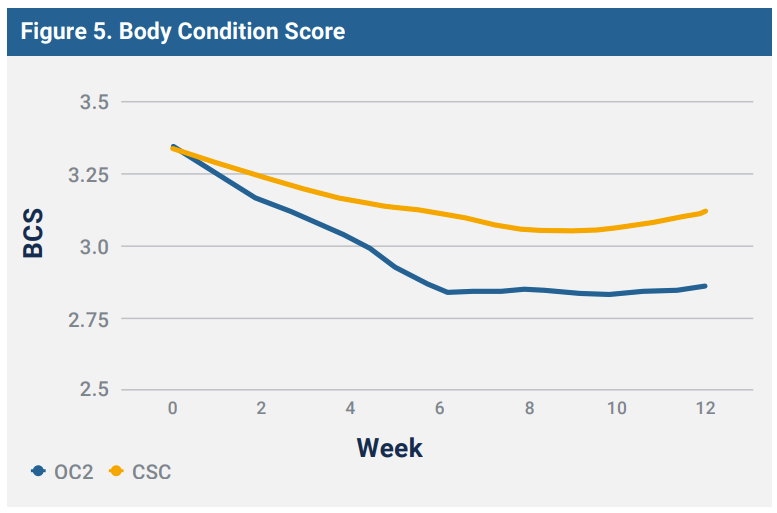
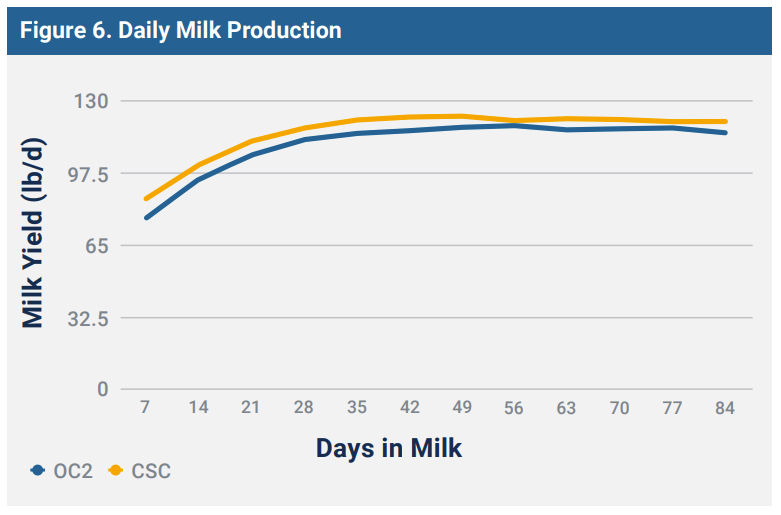
More OC2 cows needed to be enrolled in the Ovsynch program than CSC cows (26% vs 5%), and the CSC cows had fewer days to first service (67 d vs 69 d) and a greater % of cows pregnant after first service (63% vs 49%) than the OC2 cows (Table 2). The CSC cows tended to get pregnant earlier in lactation than the OC2 cows as displayed in Figure 7 which graphs the total percentage of cows pregnant by DIM.
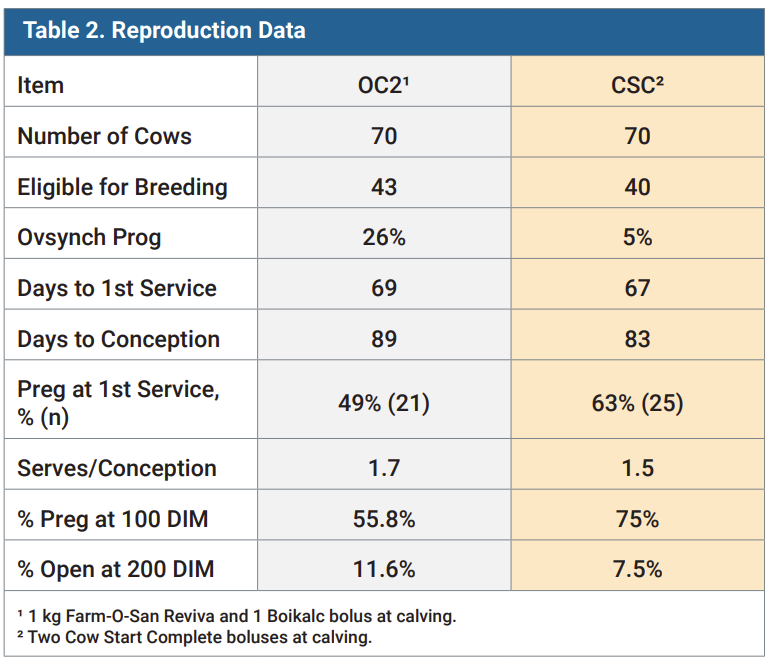
Administering the CSC boluses at calving may have helped the cows to better resolve inflammation, as evidenced by fewer health events, greater rumination minutes which could translate to higher feed intake and less body condition loss than the OC2 cows receiving two different Ca products. Better resolution of inflammation by the CSC cows would have allowed them to reallocate nutrients for improved body condition score, greater milk production and enhanced reproductive success than the OC2 cows. Interestingly, the OC2 cows would have received more vitamins A and E for immune support than the CSC cows, yet the antioxidant supplementation did not translate into improved immune function and inflammation resolution. The seaweed featured in the CSC boluses includes 70 minerals and trace minerals for immune support and to serve as co-factors for many physiological functions which may result in greater health, milk production and reproductive success observed in this study. Numerous studies in both humans and transition cows have shown that the seaweed elicits a natural anti-inflammatory response, demonstrated by lower level of inflammation markers such as SAA, TNFα and IL6. Importantly, the CSC boluses are manufactured utilizing pressure to assist in a slow, sustained release of nutrients in the rumen.
CONCLUSION
Providing two CSC boluses to Holstein cows at calving resulted in fewer transition health events, greater milk production and enhanced reproductive success compared to administering two different oral Ca products.

